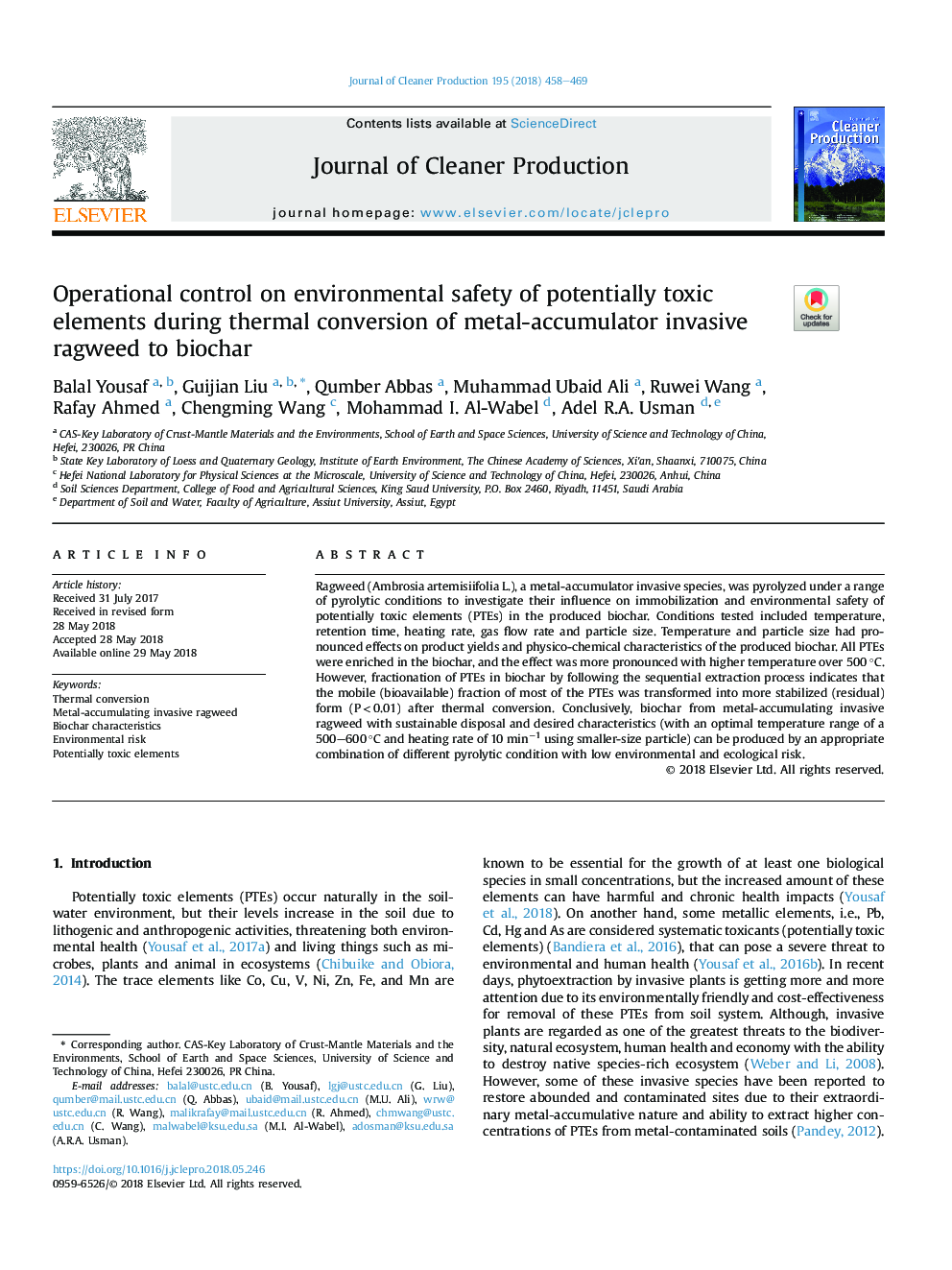| Article ID | Journal | Published Year | Pages | File Type |
|---|---|---|---|---|
| 8094087 | Journal of Cleaner Production | 2018 | 12 Pages |
Abstract
Ragweed (Ambrosia artemisiifolia L.), a metal-accumulator invasive species, was pyrolyzed under a range of pyrolytic conditions to investigate their influence on immobilization and environmental safety of potentially toxic elements (PTEs) in the produced biochar. Conditions tested included temperature, retention time, heating rate, gas flow rate and particle size. Temperature and particle size had pronounced effects on product yields and physico-chemical characteristics of the produced biochar. All PTEs were enriched in the biochar, and the effect was more pronounced with higher temperature over 500â¯Â°C. However, fractionation of PTEs in biochar by following the sequential extraction process indicates that the mobile (bioavailable) fraction of most of the PTEs was transformed into more stabilized (residual) form (Pâ¯<â¯0.01) after thermal conversion. Conclusively, biochar from metal-accumulating invasive ragweed with sustainable disposal and desired characteristics (with an optimal temperature range of a 500-600â¯Â°C and heating rate of 10 minâ1 using smaller-size particle) can be produced by an appropriate combination of different pyrolytic condition with low environmental and ecological risk.
Related Topics
Physical Sciences and Engineering
Energy
Renewable Energy, Sustainability and the Environment
Authors
Balal Yousaf, Guijian Liu, Qumber Abbas, Muhammad Ubaid Ali, Ruwei Wang, Rafay Ahmed, Chengming Wang, Mohammad I. Al-Wabel, Adel R.A. Usman,
